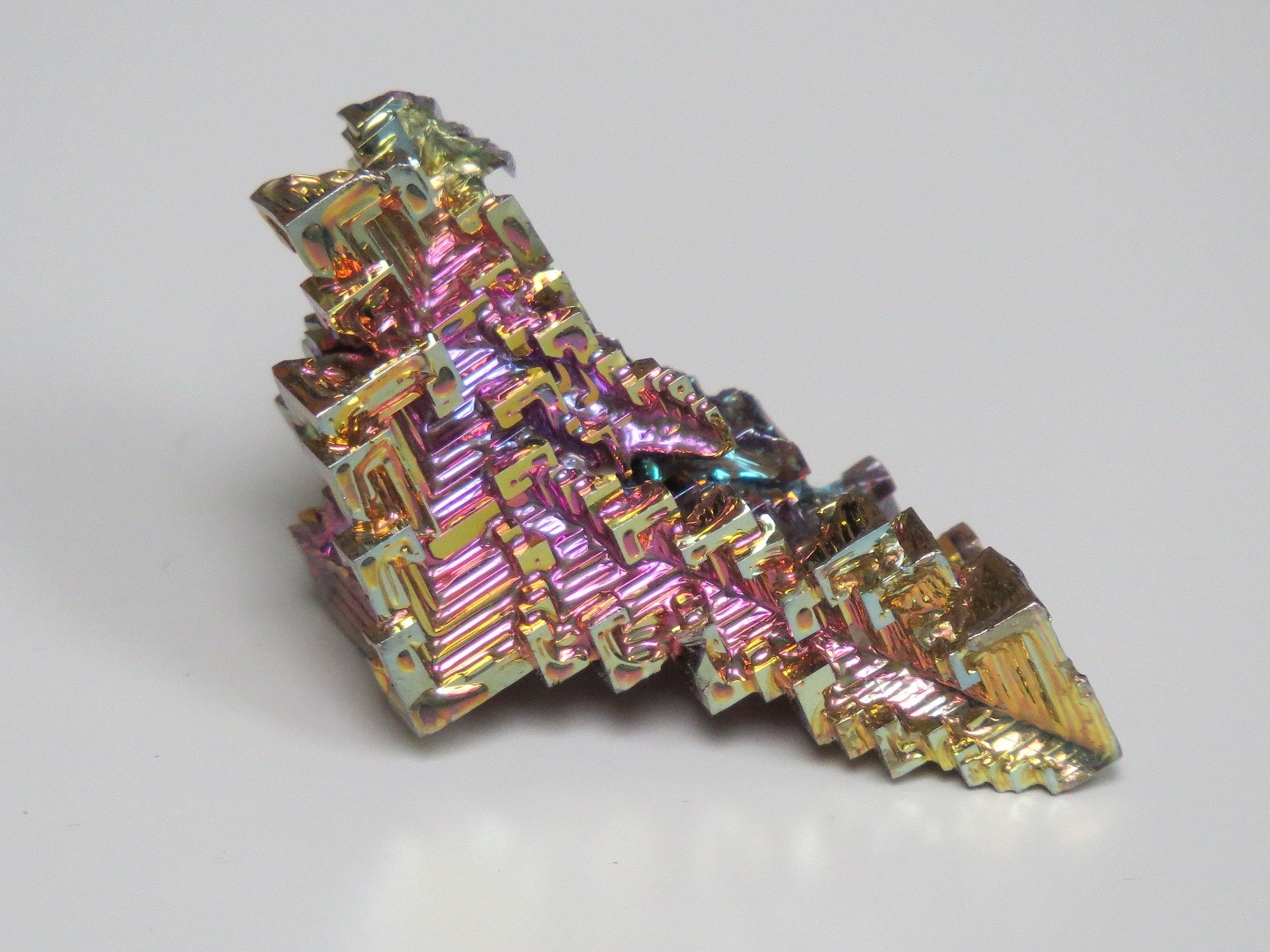
Bismuth is a chemical element with the symbol Bi and atomic number 83. It is a brittle metal that has a pinkish-white color, making it visually distinct from other elements. Bismuth has several unique properties that contribute to its significance in various industries. Firstly, it is one of the least abundant and stable elements on Earth, which makes it valuable and sought after by collectors and researchers alike. Additionally, bismuth has a low melting point, allowing for easy casting and shaping into intricate forms.
Moreover, bismuth possesses exceptional diamagnetic properties, meaning it repels magnetic fields rather than attracting them as most other metals do. This property finds applications in various technologies such as superconductors and high-performance magnets used in MRI machines. Bismuth also exhibits excellent thermal conductivity while having relatively low electrical conductivity compared to other metals. This combination of properties makes it suitable for use in thermoelectric devices that convert heat into electricity.
Overall, bismuth’s scarcity, distinctive appearance, unique physical properties, and versatility make it significant both commercially and scientifically. Its value extends beyond its market price as its applications continue to expand across different fields such as medicine, electronics, cosmetics, and metallurgy.
Historical Context: Bismuth’s Journey through Time
Bismuth, a chemical element with the atomic number 83, has a rich history that spans several centuries. Its journey through time reflects its changing worth and significance in various historical contexts. In ancient times, bismuth was often mistaken for other metals like tin or lead due to their similar appearances. However, it wasn’t until the 18th century that French chemist Claude François Geoffroy successfully isolated bismuth as an individual element.
During the Industrial Revolution, bismuth found widespread use in various industries like cosmetics, medicine, and pigments for ceramics. Its unique properties of low toxicity and high resistance to corrosion made it highly sought after for these applications. Bismuth’s market value soared during this period as its demand grew exponentially.
However, with the advent of new materials and technologies in the late 19th and early 20th centuries, bismuth gradually lost some of its importance in industrial applications. The rise of synthetic substitutes and cheaper alternatives led to a decline in demand for bismuth.
Nonetheless, recent advancements have once again brought attention to this versatile element’s potential uses in fields such as electronics and renewable energy sources. As society continues to evolve, so too does the worth and relevance of bismuth within different historical contexts.

Factors Influencing Bismuth’s Market Value
In the world of commodities, market values are often influenced by a multitude of factors, and bismuth is no exception. One significant factor that can impact the market value of bismuth is the influence of actors within the industry.
Certain key players, such as mining companies and manufacturers, hold substantial sway over the supply and demand dynamics of bismuth. Their decisions regarding production levels, pricing strategies, and product development can significantly affect the overall market value.
Moreover, government policies and regulations enacted by various actors also play a vital role in shaping bismuth’s market value. For example, changes in import/export tariffs or restrictions imposed by governing bodies can have immediate repercussions on global supply chains and subsequently impact prices. Additionally, certain countries’ industrial policies that promote or limit domestic production can further influence market dynamics.
Furthermore, technological advancements driven by research institutions and innovative companies act as catalysts for change within the bismuth market. The development of new applications or manufacturing processes utilizing bismuth can create shifts in demand patterns, which directly impact its market value.
Moreover, influential research institutes working on alternative materials may pose a long-term risk to bismuth’s dominance in certain industries if their findings prove more cost-effective or superior in performance.
Ultimately, understanding how various actors shape the market value of bismuth is crucial for investors and industry participants alike to make informed decisions regarding this valuable commodity.
Current Market Trends and Pricing Analysis:
The market trends for bismuth have seen significant fluctuations in recent years. Bismuth, a brittle metal with a pinkish hue, has gained attention due to its unique properties and various industrial applications. In the past decade, the demand for bismuth has increased steadily due to its use in pharmaceuticals, cosmetics, and electronics.
However, the pricing analysis reveals that bismuth’s value is highly dependent on several factors. The supply and demand dynamics play a crucial role in determining its market worth. In recent years, China has been the leading producer of bismuth globally, accounting for more than half of the world’s production. Any changes in Chinese regulations or policies can significantly impact the market price.
Furthermore, fluctuations in other industries also influence Bismuth’s pricing. For instance, as electronic devices become smaller and more powerful, there is a growing need for components that dissipate heat effectively – an area where bismuth shows promise. As such technological advancements occur or decline within related sectors like electronics or renewable energy systems; they can directly affect the demand and subsequently alter bismuth’s price point.
Additionally, environmental concerns are increasingly shaping market trends as consumers and businesses become more conscious of sustainability practices. This shift towards eco-friendly alternatives may lead to increased demand for bismuth-based products since it is considered non-toxic compared to other metals like lead or mercury.
Applications of Bismuth in Various Industries:
- Pharmaceuticals and Cosmetics: Bismuth compounds, such as bismuth subsalicylate, find applications in pharmaceuticals for treating gastrointestinal disorders like indigestion and diarrhea. Additionally, bismuth oxychloride is used in cosmetics due to its pearlescent properties, providing a shimmering effect in makeup products like blushes and eyeshadows.
- Electronics: Bismuth is an important component in the manufacturing of certain electronic devices. It is commonly used as a lead-free solder material due to its low melting point and excellent electrical conductivity. Furthermore, bismuth compounds are utilized to create thermoelectric materials that convert heat into electricity, making them vital for applications like power generation from waste heat or solar energy conversion.
- Automotive Industry: Bismuth alloys are utilized as additives in the automotive industry to improve the performance of components like bearings and gears by reducing friction and wear. These alloys provide enhanced lubrication properties while maintaining mechanical strength under high temperatures. Moreover, bismuth-based solders play a crucial role in joining electronic components within vehicles.
In conclusion, bismuth finds extensive application across various industries due to its unique properties and versatility. From pharmaceuticals to electronics and automotive sectors, this element plays an essential role in enhancing product performance and contributing to technological advancements.
Investing in Bismuth: Risks and Rewards
Investing in bismuth can bring both risks and rewards for investors. One of the main risks associated with investing in this metal is its volatility in market prices. Bismuth prices can fluctuate significantly due to various factors such as supply and demand dynamics, geopolitical tensions, and changes in production techniques. This volatility makes it challenging to accurately predict future price movements and can result in potential losses for investors.
However, there are also potential rewards when investing in bismuthsmith bismuth. The growing demand for bismuth across various industries, including pharmaceuticals, electronics, and automotive, presents an opportunity for significant price appreciation. As a key component in many high-tech applications such as superconductors and thermoelectric devices, the demand for bismuth is expected to increase further as technology continues to advance. This increased demand could lead to higher prices and potentially attractive returns for investors who have invested wisely in this niche metal.

